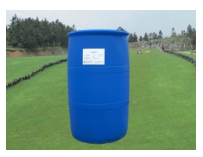Foam plays an important role in washing. Although the foam itself has no decontamination effect, it can carry dirt and can indicate how much detergent is decontamination.

A variety of detergents are required to be rich in foam and stable, such as high foam carpet cleaner. For hand sanitizer, hand washing utensils and detergent, foam is also required to be delicate and thick.
Anionic surfactants have good foaming properties and can produce rich foam. LAS, AOS, FAS and AES are good foaming agents. APG also has good foaming ability.
When alkyl alcohol amide or amine oxide is combined with LAS, Fas, AES, etc., it has good foam stabilizing and increasing effects, and is widely used as foam stabilizing and increasing agent. In addition, many water-soluble polymer compounds can also be used to stabilize and increase foam.
Surfactant, also known as surfactant, is an organic compound that greatly reduces the interfacial tension of solution at low concentration. The molecule contains hydrophilic polar groups (such as hydroxyl, carboxyl, sulfate, amino and ether bonds) and hydrophobic nonpolar groups (such as various C-H chains). According to its structure, it can be divided into anionic type, cationic type, non-ionic type and amphoteric type.
The surfactants in the solution are aligned by the adsorption of polar and non-polar groups at the interface, forming a boundary film, reducing the surface tension of the solution and exhibiting strong interfacial activity. With the increase of surfactant concentration, the formation of the micelle interfacial film is more compact and the surface tension gradually reaches a small value. The concentration of surfactant is the critical concentration of micelle. The formation of micelles increases the solubility of insoluble substances in solution. In this regard, surfactants also have solubilization.
Due to the interfacial activity, micellization and solubilization of surfactants, they often show the functions of wetting, emulsification, foaming, dispersion and penetration in solution. The powder inhibitor in the sealing liquid is mainly used to easily adsorb on the surface of the oxide film and form an interface adsorption film, which effectively prevents or slows down the hydration reaction on the surface of the oxide film and prevents the formation of powder. Secondly, the wetting permeability of surfactant is used to promote the penetration of sealing liquid into the membrane pore, accelerate the hydration reaction in the pore and enhance the sealing effect. In addition, surfactants also have the functions of fog suppression, flocculation and decontamination.